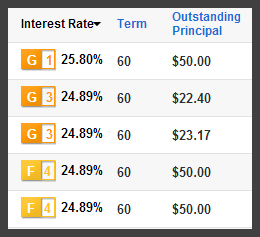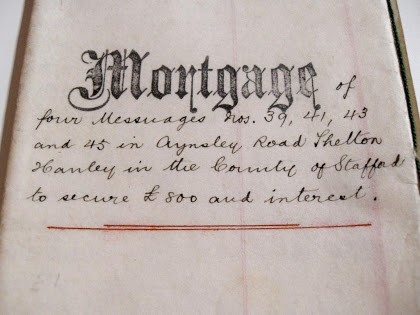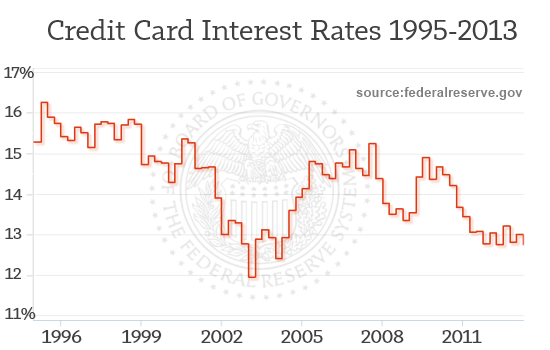Why do sites like LendingMemo seem to go on and on about peer to peer lending? What about it is worth all this adoration? There are a variety of great reasons, from its social good to its high returns. But today I want to emphasize a particularly remarkable benefit of peer to peer lending: its ability to give normal Americans an historic opportunity to invest in the avenue of consumer credit.
“This is the first time in history that non-bank investors can get access to unsecured consumer-credit products.” Aaron Vermut (The Economist)
This may sound like a bunch of financial jargon. That’s ok. Phrases like ‘unsecured consumer credit’ can sound big and intimidating if you have never heard them before, so to get a better handle on what this phrase means, let’s talk about credit cards.
Why Do Banks Drown Us In Credit Card Offers? A Solid 10% Return
For decades, the banks in our country have made scads of money issuing credit cards to pretty much anybody who had a pulse (and dogs and trees). Getting approval has become tougher since 2008, but the reality remains: banks love credit cards. Each week I receive offers in the mail to open up more and more cards. Why are banks so frantically eager to do this? The short answer: because they make such amazing returns.
What the above chart shows is the average interest rate on credit cards within the United States for the past twenty years. In short: anybody who has issued credit cards has made a ton of money. In fact, this rate was around 16% throughout the 80s, only recently coming down to its current 13% average ten years ago. Considering how the default rate for credit cards is 3% (this is eerily similar to Lending Club), this means the banks are making a 10% return by issuing unsecured lines of credit, and have done so pretty much since credit cards began. Banks send people like you and me all these annoying applications and offer us hundreds of dollars in signup bonuses because they realize how remarkably stable credit card borrowers are as a group of people to lend money to.
How much would average Americans love to earn a similar 10% return on their investments?
P2P Lending Lets Us Join the Party
Here is where peer to peer lending shines: we are able to earn a 10% ROI through investing to this same population of people, the stable and lucrative avenue of unsecured consumer credit. ‘Unsecured’ means the credit is not secured with any collateral, like a house or car (IE: a mortgage is secured; if you don’t pay, they take your house). While banks used to be the only organizations able to invest in these lines of credit, the new arrival of peer to peer lending has suddenly opened it up to regular folks like you and me.
Unsecured consumer credit has proven itself to have:
- High returns: An ROI over 10% per year
- Consistency: Amazing lack of volatility, meaning earnings do not wildly swing like the stock market does
- Trust: 30 years of history show consumer credit (and by extension, p2p lending) is trustworthy over the long term
What does this mean for you and me? It demonstrates that peer to peer lending is a way we can consistently earn a solid return for the next thirty years or more.
Becoming the Credit Card Company
 Marc Prosser summarizes this entire idea well. In his article Debt that Pays a 25% Interest Rate? Become the Credit Card Company he said, “Credit card companies make lots of money. In fact, not including penalties and fees, credit card companies have averaged over a 10% annual return on their loans over the last 26 years.”
Marc Prosser summarizes this entire idea well. In his article Debt that Pays a 25% Interest Rate? Become the Credit Card Company he said, “Credit card companies make lots of money. In fact, not including penalties and fees, credit card companies have averaged over a 10% annual return on their loans over the last 26 years.”
What I want to know is why the banks were the only ones allowed to issue 20%+ APR lines of credit. But peer to peer lending finally allows average people like you and me access to this stable lucrative avenue, even in high risk G-grade Lending Club or HR-grade Prosper loans that have interest rates above 25%.
Mr. Citibank, Tear Down This Wall
The future holds great promise for peer to peer lending because it has broken down the barrier between people who need loans and people who have extra money to invest, a spot historically enjoyed by banks. This goes beyond personal loans; other types of consumer credit offer equally promising returns as well. For instance, at LendIt this year, Lending Club CEO Renaud Laplanche spoke about how he sees peer to peer lending eventually allowing us to issue the following to one another:
- Business loans
- Student loans
- Credit cards
- Insurance
- Even Mortgages
Crowdfunded Home Mortgages? You Bet.
 Consumer credit like home mortgages have traditionally been issued by banks for hundreds of years (see the 1894 mortgage on the right). This is because a mortgage has always been such a remarkable investment. Even today, mortgages continue to offer a stable, long-term return with a default rate around 1%! Average Americans could never dream of being able to issue mortgages to one another independently. Yet the coming decade might see a remarkable group of homes being crowdfunded by average Americans collaboratively compiling their retirement accounts to issue large $1 million home loans.
Consumer credit like home mortgages have traditionally been issued by banks for hundreds of years (see the 1894 mortgage on the right). This is because a mortgage has always been such a remarkable investment. Even today, mortgages continue to offer a stable, long-term return with a default rate around 1%! Average Americans could never dream of being able to issue mortgages to one another independently. Yet the coming decade might see a remarkable group of homes being crowdfunded by average Americans collaboratively compiling their retirement accounts to issue large $1 million home loans.
Tim Worstall at Forbes disagrees, believing p2p lending will never replace banks. He thinks lenders would be unwilling to tie up their cash for a 30-year mortgage – a fair point. Yet Lending Club or Prosper could possibly create a public fund that issues these mortgages, a fund that could allow people entry and exit whenever they desire. Or retail lenders like myself could purchase notes in 30-year mortgages, reselling them any time we wished on the thriving Foliofn secondary market.
The Stability of the American Population
Peer to peer lending allows average Americans like you and me the ability to invest in unsecured credit, an avenue that has decades of history showing its high returns and low defaults. And like Aaron Vermut said, this is the first time in history when this door stands open. As a peer to peer lending investor for the past two years (see my p2p lending returns), I can say with confidence that it works. It really does.
What I find most interesting is how stable people are as an investment in comparison to companies – consumer lending versus the stock market. While the average American has been able to invest in publicly traded companies on the Dow Jones Industrial Average for over a hundred years (investments which have become increasingly untrustworthy in the past decade), we have never had access to the much more stable and rewarding arena of lending to each other. Isn’t it fascinating how consistent individual lenders are in comparison to companies?
As the internet brings the world closer and closer together through avenues like email or streaming video, peer to peer lending is doing the same thing with our finances. I am so eager for a future where people are organically enabled to borrow and lend to each other with such ease.
[image credit: Wonderlane Fields of Beautiful Mexico/”Mortgage” by Daniel Catt CC-BY 2.0]


I think we need to shout more about the quality of the asset class that is Peer to Peer lender books. I have had many meetings with VC’s and Fund Managers who are super excited and love the idea of piling in when it becomes part of the UK regulatory framework in 2014. In the next 12 months this sector will explode in the UK & Europe.
Great article Simon. You have summarized exactly why I became so excited about p2p lending when I discovered it back in 2009. Judging by the huge investor inflows in recent months more people and professional investors are realizing the same thing.
This is a great article Simon. It would be great to balance it out with a couple of risk considerations of the sector such as poor borrower due diligence leading to high loan defaults as well as the unknown regulatory impact on the sector in the UK (and possibly in the US as the JOBS Act is still not yet finalised).
Thanks Kanini. Indeed, there is a risk of default rates going up and regulatory hurdles choking growth, something people should certainly be more aware of. I’ll be writing a post on p2p lending risks sometime in the near future. Thanks for stopping by.
While I agree that p2p lending presents a compelling investment opportunity, I think this article understates the risks of consumer credit. This is largely because the referenced default rates only look at the last year of data and ignore the recession. The 3% credit card loan default rate isn’t static and is very much affected by the business cycle. Looking at the same S&P/Experian data, cited in the article, the default rate peaked at over 9% in 2010. During the most recent recession, the net return of credit card lenders would be far less than the indicated 10% and could even be negative depending on whether their borrowers were more or less risky than average. Also, I disagree that investing in people is necessarily more consistent than investing in businesses. The whole mortgage crisis was caused by millions of individual borrowers defaulting in mass. Again looking at the S&P/Experian data, the mortgage default rate was 5.67% in 2009 and was likely considerably higher than that if you look solely at less than prime quality loans.
I’m a fan and investor in p2p loans, but I think that the best investing approach is to be levelheaded about risks as well as the rewards.
Hi David. Thank you for your well structured comment. While the credit card default rates I referenced indeed did not mention the recession, I feel that this is because 2010 was such an anomaly. If you look at thirty years of CC default rates (link), you’ll see that they typically hang around 4%. Likewise, the 2008 recession brought massive losses in the stock market, while Lending Club still managed to give its lenders a positive return (link). So, yes, the banks would have made less than 10% during 2010, but a very typical earning on credit cards has historically been that 9-10% figure. Secondly, even in the recession p2p lending outperformed the stock market. This is why I feel that people are more stable than companies. If the underwriting is done correctly (which is why the housing market crapped out), then (using the stock market as our base line) the volatility is remarkably low – year after year, and by extension, peer to peer lending is far more trustworthy.